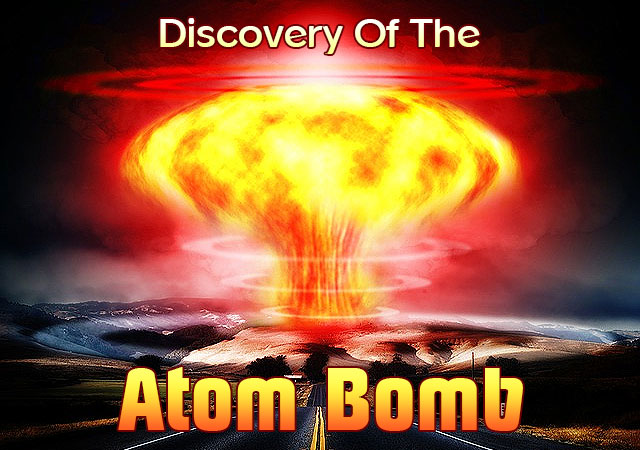

The Thin Man design was abandoned after experiments by Emilio G. Thin Man, 17 feet (5.2 m) long, was designed to use plutonium, so it was also more than capable of using enriched uranium. Little Boy was a simplification of Thin Man, the previous gun-type fission weapon design. This is one of the rare photos where the inside of the bomb can be seen.

Francis Birch (left) assembles the bomb while physicist Norman Ramsey watches.

At least part of the 1,200 short tons in addition to the uranium ore and uranium oxide captured by the Alsos Mission in 19 went to Oak Ridge for enrichment, as did 1,232 pounds (559 kg) of uranium oxide captured on the Japan-bound German submarine U-234 after Germany's surrender in May 1945. Most of the uranium necessary for the production of the bomb came from the Shinkolobwe mine in the Belgian Congo, and was made available thanks to the foresight of the CEO of the High Katanga Mining Union, Edgar Sengier, who had approximately 1,200 short tons (1,100 t) of uranium ore transported to a warehouse in Staten Island, New York in 1940. The first shipments of highly enriched uranium were sent to the Los Alamos Laboratory in June 1944. Enrichment was performed at Oak Ridge, Tennessee, where the electromagnetic separation plant, known as Y-12, became fully operational in March 1944. The vast majority of the work came in the form of the isotope enrichment of the uranium necessary for the weapon, since uranium-235 makes up only 1 part in 140 of natural uranium. As the first design developed (as well as the first deployed for combat), it is sometimes known as the Mark I. Development īecause uranium-235 was known to be fissionable, it was the first material pursued in the approach to bomb development.

Little Boy was named by others as an allusion to Thin Man since it was based on its design. The "Fat Man" was round and fat so it was named after Kasper Gutman, a rotund character in Hammett's 1930 novel The Maltese Falcon, played by Sydney Greenstreet in the 1941 film version.
ATOM BOMB SERIES
The "Thin Man" was a long, thin device and its name came from the Dashiell Hammett detective novel and series of movies about The Thin Man. Physicist Robert Serber named the first two atomic bomb designs during World War II based on their shapes: Thin Man and Fat Man. By 1950, only five complete weapons had been created, and these were retired by November 1950. Unlike the implosion design, which required sophisticated coordination of shaped explosive charges, the gun-type design was considered almost certain to work so it was never tested before its first use at Hiroshima.Īfter the war, a number of components for further Little Boy bombs were built. Its components were fabricated at three different plants so that no one would have a copy of the complete design. Little Boy contained 64 kilograms (141 lb) of highly enriched uranium, although less than a kilogram underwent nuclear fission. Fission was accomplished by shooting a hollow cylinder (the "bullet") onto a solid cylinder of the same material (the "target") by means of a charge of nitrocellulose propellant powder. It derived its explosive power from the nuclear fission of uranium-235, whereas Thin Man was based on fission of plutonium-239. Like Thin Man, it was a gun-type fission weapon. Little Boy was developed by Lieutenant Commander Francis Birch's group at the Manhattan Project's Los Alamos Laboratory during World War II, a reworking of their abandoned Thin Man nuclear bomb. The Hiroshima bombing was the second nuclear explosion in history, after the Trinity nuclear test. It exploded with an energy of approximately 15 kilotons of TNT (63 TJ) and caused widespread death and destruction throughout the city. Tibbets Jr., commander of the 509th Composite Group, and Captain Robert A. The bomb was dropped by the Boeing B-29 Superfortress Enola Gay piloted by Colonel Paul W. Little Boy was the name of the type of atomic bomb used in the bombing of the Japanese city of Hiroshima on 6 August 1945 during World War II, making it the first nuclear weapon used in warfare.


 0 kommentar(er)
0 kommentar(er)
